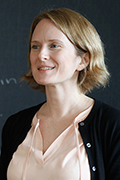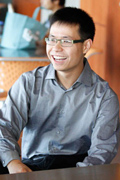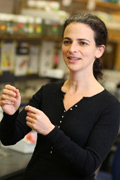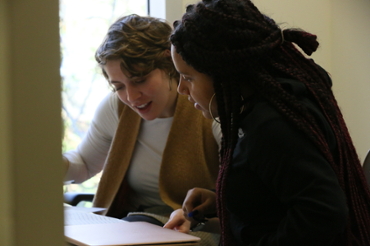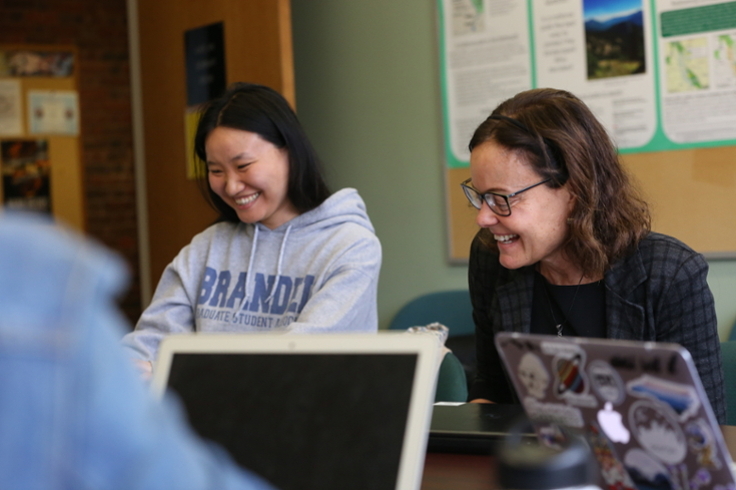Adrianna Shy Becomes a Graduate Researcher in Chemistry After Attending a Summer Program at Brandeis
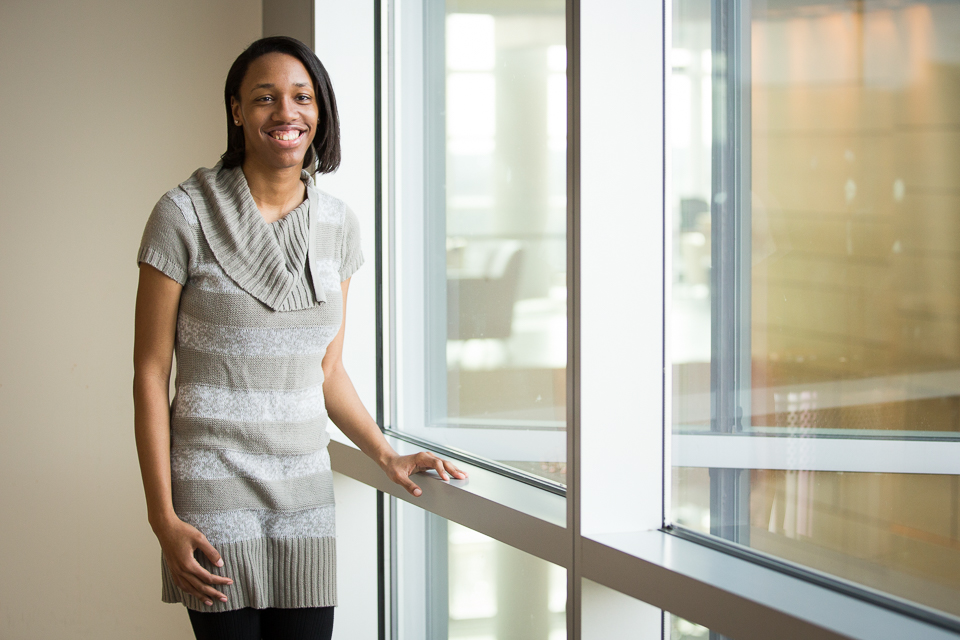
February 12, 2019
Abeer Pamuk | Graduate School of Arts and Sciences
Adrianna Shy’s first interaction with Brandeis came in 2016, when she was a junior at Hampton University. Shy participated in a summer Research Experience for Undergraduates program in the Materials Research Science and Engineering Center (MRSEC). The program enables students to spend time honing their research skills while Brandeis scientists serve as their “big brothers and sisters.”
Shy spent the summer working in Professor Bing Xu’s lab, focusing on peptide self-assembly. Working in the lab helped her to expand her research experience to the field of biomaterials and broadened her perspective about the possibilities of a graduate education and the careers available to her as a researcher. “The comradery was great, and I had many memorable experiences through the internship,” she says.
Following her experience at the MRSEC, Shy decided to stay at Brandeis as a PhD student in chemistry. The support she had received from faculty as an undergraduate researcher was the most important factor in her decision. “I know I can go to any professor and ask a question or get advice,” she says. “Even with busy schedules, they still take the time to help students succeed.”
Shy still works in Xu’s lab, where her work focuses on two main research areas:
Her first focus is looking into how to conjugate small peptides to known antibiotics to improve their uptake and retention inside bacteria. “Some antibiotics are effective but can be toxic to healthy cells,” she says. “By modifying these prodrugs, hopefully we can increase their efficacy while decreasing their adverse effects.”
The second part of her research focuses on the self-assembly of small peptides, which is a primary focus in the lab. “I synthesize small sequences from two proteins, amyloid precursor protein (APP) and X11. I then examine their ability to make small nanostructures through different stimuli, such as a change in pH.”
Shy hopes that by understanding more about the morphology of small molecules outside of the host protein, we can understand more about the interactions between the overall protein itself, and possibly use these small molecules for improved drug delivery.
The Xu lab takes an interdisciplinary approach to scientific investigation, using chemistry, biology and materials science in its research. “I hope that as time progresses, I will have the opportunity to collaborate with other labs as well,” says Shy. Although she mainly works independently, she has the support of her lab mates if she has any questions or concerns. “People collaborate on projects all the time, so the sense of teamwork is strong. Everyone is helpful and supportive,” she says.
Outside of the lab, Shy has found the science community at Brandeis to be very welcoming to students with all kinds of different backgrounds. She recently joined the Women in Science Initiative and is a member of the Diverse Brandeis Scholars Group. “It is great to meet women from different disciplines and get to know others outside of the lab,” she says.
Shy advises prospective chemistry students to “stay motivated and don't be afraid of failure. You do not have to be the smartest in the room or the best at everything. I had really bad impostor syndrome when I first got here, but I didn't let that fear stop me from pursuing this degree. Try your best, and don't be afraid to ask questions. These next few years will definitely have its challenges, but there are rewards along the way.”
